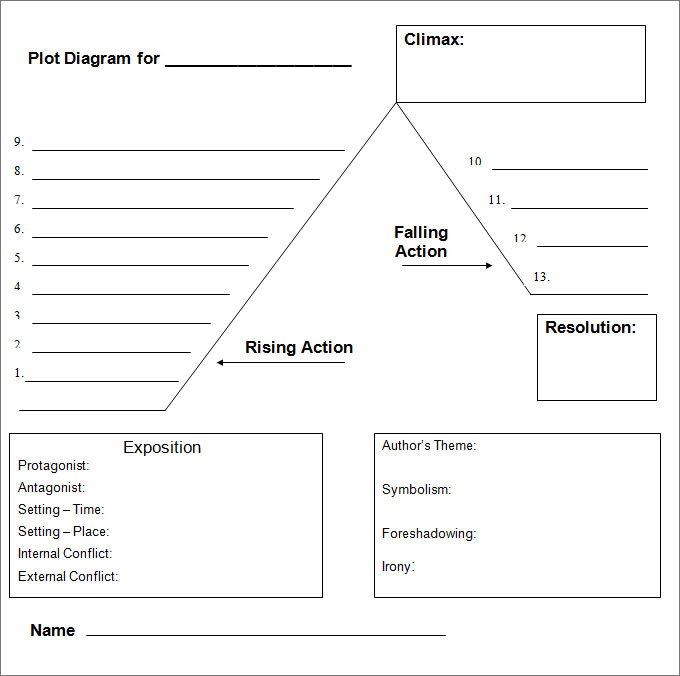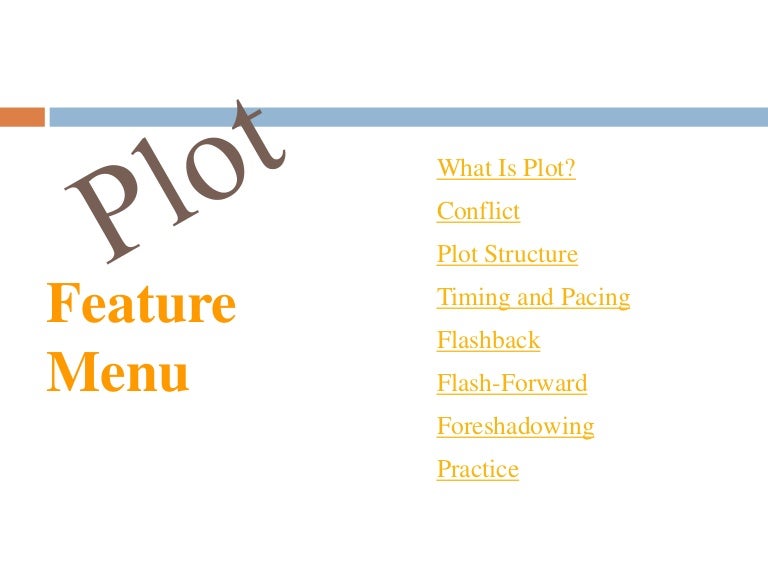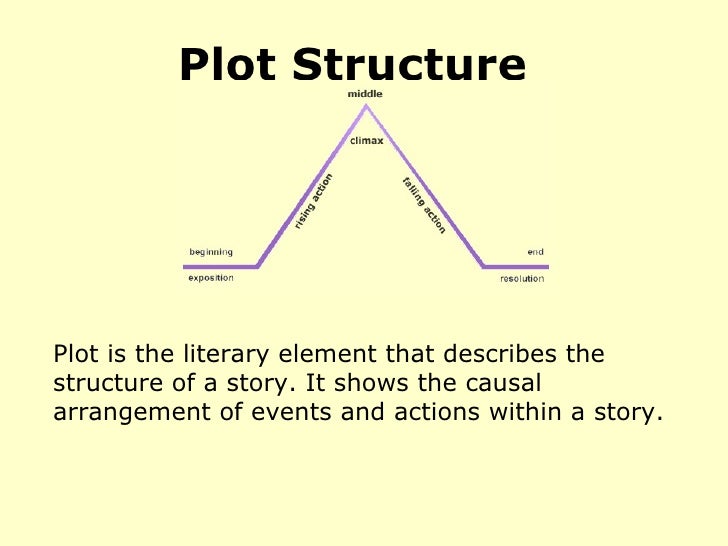A Plot Structure
Posted By admin On 06/04/22Overcoming the Monster. Overcoming the Monster stories involve a hero who must destroy a. They cover such topics as what a plot is, how structure holds plot together, how to get ideas, and how to handle/interweave plot into all the levels of a novel (from whole sections such as the Beginning or middle of the work, down to the micro level of individual scenes).
If you need to write a story, it's always important to structure it well. Needless to say, many students have no clue how to structure their written stories in accordance with requirements. First of all, you have to understand the definition of plot, characters, structure, and architecture of the story, as well as a series of key tools, e.g. the exposition or the conflict. In this detailed guide, we're going to share with you the leading principles on how to practice in writing fiction stories and novels with a proper structure, tension, and characters.
Of course, even creative students may get difficulties with writing their narrative stories or other piece of writing. When it happens, it's important to search for a reliable helping hand to create a successful paper. We're ready to fulfill this work for you! Forget your learning disturbance and contact our trustworthy writing company. You can get professional help without delays. Our excellent writers can share some creative fiction documents, novels, and other data for your needs on time. Can't spend long hours with your story? Time to get some help! Just mmake a small step and place an order. Professional writers will find the right words and considser all your points.
What is the plot structure?
How To Write A Plot Structure Analysis
A really interesting story and its characters must have a certain meaning for a reader, which makes it possible for its author to convey their message. Getting all story parts (exposition, etc.) connected to each other in some way is essential for that understanding. A plot structure may vary, but it must tie everything together to make this contact real. Be it a simple drama, a conflict, a series of action scenes or a tension-filled fiction, the meaningful plot is what actually contributes to the story development.
It might be much easier to come up with a story based on real conflict as wel as characters and on natural rising action, but there are enough tools for giving a proper shape to texts of all kinds of complexity. Learning these types of different story structures helps to obtain a proper form and setting for your creative story’s plot.
Freytag’s Pyramid
This diagram is the easiest one for learning what a traditional plot structure is. It starts with the exposition, which is the opening of the story. Then comes the rising action, the point at which the story or the issue gets complicated, and which prepares the reader for its 'peak'. The top of the ‘pyramid’ is the story’s climax: the most important turning point. The climax is followed by falling action, gradually decreasing the plot intensity, when the things return to their natural state, taking the reader towards the conclusion, or ‘resolution’.
- Pros: simple and clear for both writing and reading.
- Cons: usually, it is easy to anticipate the climax, which obviously decreases its effect.
The Fichtean Curve
Similar to the Pyramid diagram above; but the exposition part is replaced by a series of specific crises, eventually developing into a climax with a maximum level of tension. After a series of conflicts and climax, the falling action follows to the end of the story.
- Pros: generates a more suitable plot for modern literature. Cons:
- Cons: a more skillful depiction of multiple crises is required.

The Hero’s Journey
Classic plot diagram to show the difference between the known and the unknown in the hero’s life. Their life in the usual exposition is interrupted by an adventure the hero has to make (rising action), resulting in a major crisis (e.g., hero’s death). It is followed by the ‘returning home’ section and the story finishes in the familiar world, with all the changes the adventure has brought.
- Pros: makes a fine plot for a long story.
- Cons: might be too long for a modern reader to wait for its most captivating part.
In Media Res
From the Latin the term means 'into the middle of event'. It is such a literary approach when the story starts from the middle or the peak, meaning exposition replaced by crisis. Climax and the falling action part are also present with flashbacks of the climax appearing all the way down to the concluding resolution section. This approach is popular in writing books, as it serves as the great hook that sparks the reader's interest. Do not mix up in media res, when the story starts with its peak part, with just a story beginning with an action. There are two different approaches.
- Pros: makes the best short story structure for action fans.
- Cons: too much action might make it tiresome for some audience.
How to structure my story: The main definitions
Before we start, let's point out the major elements (data and tools) you should learn and remember:
- Structure - it's a skeleton of any good story. If you're writing a short story without structure, you may follow up with a mess. This is a significant section of an essay.
- Plot - it's a part of the structure that actually tells the readers what happens in your work. If you want to write a bright story with a nice plot and setting, try to practice simple tips (with plot structure examples and diagram types) from our guide.
- Act - it's a part of the story. Usually, all the papers are based on a 3-act structure where the first act is a call to a series of action elements, the second expresses tension, crises, and conflicts, and the third shows readers the resolution of the problem.
- Doorway - this is a scene of the plot that goes directly without backing out. For example, the leading characters in novels can decide to do something they never did before. Every story may have several doorways in its plot. A doorway is a transition from the start to the middle, and then from the middle U the finish.
- Disaster - it's a moment when the hero decides to reach a particular goal but ends up badly. Often contains conflict.
- Disturbance - it's a call to action of the narrative story when a hero gets the idea to reach a goal (rising action and high tension are about to follow).
- Character arc - this is a transformation with the main character during the story. Without the key character's changes, with no moving arc, the novel isn't interesting to anyone.
- Narrative arc or story arc. It is the structure or the plot of the story. It consists of such basic components and exposition, climax, and conclusion or resolution. The number of components can be extended.
What are the 5 elements of the plot structure?
It's easy. Generally, these are the components described in the above part
- Exposition
- Rising action
- Climax
- Falling action
- Resolution
Successful practice to write a good plot for your story
Here we want to share an example of what you must include in your future plot. You can read this simple scheme and practice it in writing your own essays and novels.
1. Act 1 - the first element of your future narrative essay that includes the exposition (or setting) as well as:
- A hook. All the writers have to captivate their audience at the very beginning to make them read the entire story.
- A disturbance. This is a call to the conflict or adventure where tension tells us something interesting will happen soon. The example of a disturbance is when the hero gets the first idea on how to solve the difficulty.
- A doorway 1. It means when the leading character goes forward through the door, they cannot go back anymore. The notion of doorways was introduced by James Scott Bell in his famous book Plot and Structure.
2. The middle act - this is the second act of your plot that includes a description of how the protagonist acts in reaching their goals. The middle act includes the following elements:
- A midpoint - it's where the hero accepts the challenge and makes something to alter the situation of the story. This is the middle of your novel, where things change significantly, and tension is high.
- Revelations and complications - these things alter the character's view of the particular issue in the plot. Keep in mind the character's arc that should contain the main hero.

3. The final act - this is the end of the novel, where the writer should use the following tools:
- A doorway 2. According to Bell, a proper structure must include a disturbance point and two doorways. The second doorway leads everyone to the last battle of the plot. When something bad happens, this doorway ends up with a disaster.
- A crisis - this is a moment that describes falling events where a protagonist makes their important decision on how to solve the problem or conflict.
- A climax - it's the most exciting moment of the entire plot where readers are getting close to knowing about the outcomes of the decisive battle.
- A resolution - the concluding part of the story where an author describes what happened after the last adventure. The audience gets results of the events and the story ends up.
You can try this scheme to write a quality narrative story to share your message efficiently. We hope our simple ‘courses’, as well as the tricks with exposition and setting, characters, conflict usage, doorways and other elements of a plot, will be helpful in your narrative writing.
Have no time to practice our simple tips due to a lot of homework? Feel scared that you cannot finish both your learning and your writing within a courses’ deadline? Or maybe you feel stuck in the middle of your writing and search for proper elements? Don't worry, we have a team of professionals to make this work instead of you! Our experienced writing company hires the best writers to help you with a plot and structure! Just call us right now!
What do we mean when we talk about story structure?
A story is a complex entity comprising many interrelating parts. The author imposes some sort of organising principle onto the material, turning the story into a narrative. The result of this forming or shaping of the material is the story structure.
Certain structural markers are so explicit that the audience is aware of them, such as chapters in novels. Elizabethan plays are typically divided into five acts. A film script is broken down into acts, sequences, and scenes.
The beat is the smallest unit of story, below the scene in the structural hierarchy. It is the space between an action and the reaction it causes within a scene.
- Beat
- Scene
- Sequence
- Act
- Story
A plot event is not part of this traditional hierarchy, being more of a meta-unit somewhere between beat and scene.
Elements Of A Plot Structure
Scenes and acts are defined in screenplays, like chapters in novels. But stories have structures that are not usually made obvious or explicit.
Beats
There are two different understandings of the term beat.
A scene may be broken down into beats – marked only by the moments when the mood or relationship the scene describes changes. Two characters are having a conversation, character A says something which makes character B react in a different way from what A expected – that’s a beat.
Plot Structure Diagram
The term beat is also sometimes used when marking such changes on a bigger scale, across an entire narrative. Some screenwriters work with so-called beat sheets; in the Beemgee outlining tool, the plot event cards are perfect for creating beat sheets, since each card is designed to stand for one plot event. In a beat sheet, a beat is one unit of plot. If you think of narrative as a chain of events, then each beat is a single link. In one school of thought, a Hollywood movie is ideally constructed of exactly 40 such beats.
One need not be quite so prescriptive. A beat is an occurrence in a story that changes something. It is an event that has an effect on something which happens later in the narrative – or at least audiences are trained to expect this. Cause and effect is a prevalent force in any story.
Three Act Structure
We mentioned above that plays, such as the ones by Shakespeare, are divided into acts. But not only when an author expressly writes in acts is a story divisible into them.
Example Of A Plot Structure
If you analyse pretty much any story in terms of its structure, you’ll probably be able to break it down into sections. Quite possibly you’ll identify, well, the beginning, the middle bit, and the end. That may sound a little trite, but actually we’re getting at fundamental principles that are ancient and powerful. Aristotle describes the idea of thesis, antithesis and synthesis. The Hero’s Journey may be divided into the sections Departure, Initiation and Return.

Basically, any story has a phase in which the audience is introduced to the setting and world of the story, the main characters, and the problems they must deal with. This is act 1. In the second and longest act, the audience accompanies the characters as they deal with the problems, face obstacles, and move towards a goal. The last and often briefest act describes the outcome, the (re)solution of the problems set up in act 1.
Symmetry
Plot Structure Pdf
The audience may not always be aware of structure. Indeed, sometimes even the writers aren’t. But strangely, stories that last through the ages and traverse cultures tend to exhibit certain forms. There are structural aspects that recur throughout storytelling.
One of the strongest and yet least obviously visible aspect of story structure is symmetry.
Stories have a tendency to symmetry. This implies that stories have a pivotal midpoint. One can see this in stories from Shakespeare’s Hamlet to James Cameron’s Titanic. Hamlet gains certainty that his uncle killed his father in the middle of the story, and overcomes his hesitation to act. The Titanic hits the iceberg in the middle of the story.
If a story is divisible into two halves, you might think it should have two acts. Or maybe four. The reason why narratives are not thought of this way is that the midpoint sits (in a three act story) in the centre of the second act, and while it changes the drive of the plot, the purpose or function of this section of the story remains – the audience accompanies the characters as they deal with problems set up in act 1, face obstacles, and move towards a final goal.
When people talk of “rising” and “falling action” in stories, they are usually referring to symmetry.
Linear Plot Structure
Finally, the idea of symmetry can be seen in the “well-roundedness” of stories. If a problem is set up in act 1 and resolved in act 3, then that means there is a scene near the beginning of the story that conveys to the audience what the problem is, and a scene near the end of the story that gets across whether or how the problem has been dealt with.
Indeed, you can to an extent match up scenes (or better plot events) in the second half with plot events in the first half. Every scene in the first half finds its equivalent in the second half. Formally speaking, the more such matching you can do the better.
Related functions in the Beemgee story development tool:
Structure Markers and Story Beats
Want to create your very own new story project? Click this button:
See also:
Definition Of A Plot Structure
- Video: How to set structure markers Set the structure markers in the NARRATIVE order, see them ...read more...
- Dramaturgy – The Craft of Composing Story Dramaturgy means “the craft or the techniques of dramatic composition”. ...read more...
- No Story Without Backstory Inventing a story that has no backstory is about as ...read more...